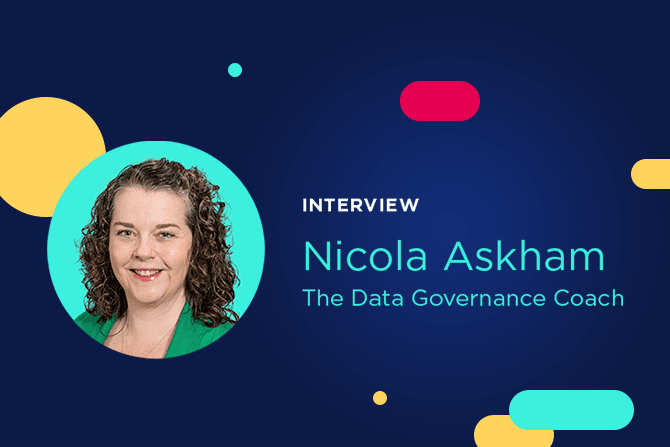How to break down organizational silos to engage everyone in your data project
Organizational silos prevent data sharing and collaboration, increasing risk and reducing efficiency and innovation. How can companies remove them and ensure that data flows seamlessly around the organization so that it can be used by every employee?

Today, organizations have to operate in a more fluid and volatile world, meaning they need to be more agile in order to successfully adapt to a range of new challenges. Traditional organizational silos, whether based around roles (marketing, accounts, operations) or by country/location make it difficult to operate more flexibly and collaboratively, holding back success.
This is particularly true when it comes to data sharing. Used effectively, data is the lifeblood of collaboration, providing organizations with a comprehensive view of their operations and enabling them to take better decisions, successfully manage risk, and spot new opportunities for innovation.
Given the importance of agility, how can organizations break down departmental silos and benefit from the seamless sharing of data?
Why organizational silos are a barrier to success
It is important to understand that departmental silos have grown up for good reasons. Sometimes they are the result of mergers & acquisitions, but more often they enabled teams of specialists to work effectively together, often in a single location, providing a focus on doing their roles to the best of their ability. Accounts team could manage payments and invoicing, customer service deal with consumers, and sales would bring in new business, all without interacting heavily with other teams. Each department created and fine-tuned its own processes to enable it to deliver on its objectives effectively and efficiently.
This model is no longer fit for purpose in many industries. Increased competition, changing customer needs and a more volatile world all mean that teams need to work together to meet corporate objectives. For example, if a customer calls with a query about billing or a delivery, they expect the contact center to have all the information required to instantly solve their problem, without needing to be transferred or called back.
Data silos are a key consequence of organizational silos. According to IDC, over half of enterprise data is siloed, and just 58% of unstructured data is used more than once. This is a major issue for two reasons. It holds back the positive benefits of greater collaboration, and significantly increases risk.
Data for cross-departmental collaboration
Data should be the lifeblood of collaboration between teams, providing them with the information they need to innovate, solve customer issues, and make better decisions. Often data generated by one department may not be seen as valuable by that team, but could solve a fundamental business need for another department. Yet, employees don’t even know that the data exists and don’t have access to it, resulting in missed opportunities.
Data to reduce enterprise risk
Organizations rightly have to ensure that all of the data they hold, particularly around customers, is stored securely and complies with policies such as the GDPR and CCPA. However, if data remains in organizational silos, business leaders such as Chief Data Officers (CDOs) have no overall, comprehensive view of all information, dramatically increasing the risk of breaches and significant fines and reputational damage. Storing data at a departmental level can also result in inefficiencies around duplication and increased IT costs, around server space and management time.
The challenges to breaking down organizational silos
While the benefits of collaboration and data sharing across the entire organization are clear, there are significant challenges that hold back success. These are both cultural and technical:
- Departments are used to being independent, and may not want to share their data. They can feel that making it available opens them up to closer scrutiny from across the organization that may impact their budgets or operations.
- Often there is no culture of collaboration between departments, with teams suspicious of each other. In extreme cases, different departments, such as those creating and selling different products, may feel that they are competing with other teams, increasing mistrust.
- Being mandated to share data by central teams can feel like an imposition for decentralized departments. This means that it is not treated as a priority for political reasons.
- On the technical side, departments may use different tools and formats to manage data, leading to compatibility issues when sharing information between systems.
- The terms used to describe data can vary substantially between departments. For example, the term “customer” can mean different things to accounts or sales. There is no single language to describe data across the organization.
- Preparing data and sharing it with the wider business requires time and resources. Busy departments may not see the value in investing in data sharing, just the overhead.
How to successfully remove organizational silos
The challenges to breaking down data silos are significant. However, the benefits that data sharing brings, in terms of both improving business performance and better managing risk mean that organizations have to focus on solving the issue and creating a data-driven culture across the company. There are five areas to focus on over time to break down organizational silos:
Lead data sharing from the top
As well as the CDO, the focus on breaking down silos has to be supported by all senior management and departmental directors. The CDO therefore has to begin by getting buy-in from their senior board-level colleagues, explaining the direct benefits to each department, as well as the wider business.
Create a data governance policy and framework
To ensure data is managed consistently, organizations need to put in place an effective, company-wide data governance policy. This needs to be clear and understandable to everyone, and backed up by processes, rules and steering committees to ensure it is implemented effectively. As part of this program, data governance standards need to be put in place around metadata and a data glossary developed that ensures consistent naming of data across the organization.
Change culture to get everyone on board
According to Gartner, 90% of data governance programs fail, dramatically impacting data sharing benefits. Often this is due to people not seeing their value. As well as gaining senior management buy-in, organizations need to educate the wider business around the positive impact that data sharing can have on their roles. As this is a major cultural change, particularly in historically siloed organizations, it requires a significant change management program, built on ongoing communication, training and education for all.
Develop a clear structure for data ownership
Data is normally generated at a departmental level, from business systems, sensors and other digital solutions. That means the people that know and best understand the data are those closest to it within specific departments. They are often part of the business rather than the IT team. Therefore, appoint and train these local experts as data owners, giving them responsibility for their data and ensuring that it is available and understandable to all. Involving them early is key to driving momentum and making more and more data available for sharing widely.
Make data available to all through a unified data marketplace
The final step in breaking down silos is to ensure that everyone in the business can easily discover, understand and use data in their daily working lives. That means making it available in a comprehensive, intuitive centralized data marketplace/data portal that can be accessed by all. Data has to be easy to find, well-described through metadata and presented in a variety of data asset formats, such as visualizations, maps, dashboards and charts, to help non-specialists use it with confidence. Equally, data marketplaces have to provide data in technical formats, such as via APIs, so that data assets can be quickly connected to business systems to automate sharing across the organization.
Running organizations in a siloed, disconnected manner is no longer relevant or flexible enough for today’s fast-moving, collaborative and challenging world. Organizations therefore need to break down silos to increase efficiency, effectiveness and innovation – and this starts with comprehensive data sharing to fuel the growth of agile, data-driven cultures that can meet current and future challenges.
Want to know more about breaking down organizational silos and freeing your data? Get in touch to arrange a demo of our solution.



